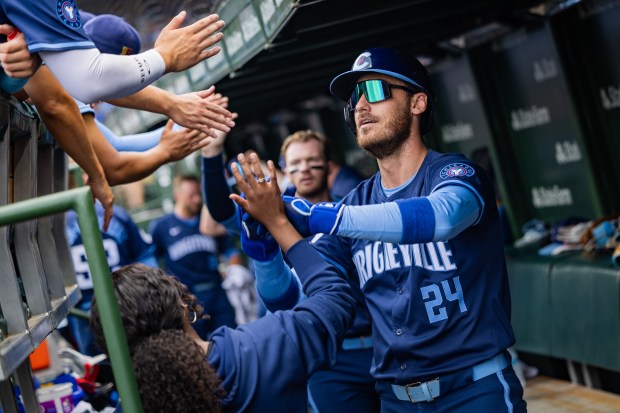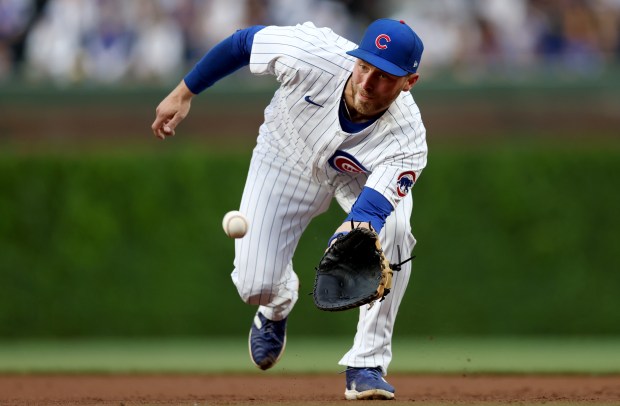SAN ANTONIO — Without a trade, the Chicago Cubs don’t have a clear avenue to infuse more talent into the lineup, unless they try to improve the catcher position where the franchise doesn’t have a clear-cut everyday starter.
Miguel Amaya, 25, overcame a difficult offensive beginning to the year by hitting .282 with a .331 on-base percentage and .799 OPS after July 6, aided by eliminating a leg kick to help his timing. The Cubs are expected to add a catcher to share the starting role with Amaya in 2025 — whether through a trade or free agency — which will keep him well-rested and used in better matchups. The key will be identifying and acquiring a catcher the Cubs believe can fit that 1A-1B role rather than a true backup catcher who gets a rare start.
The Cubs also have a top-10 prospect behind the plate with Moises Ballesteros, who raked in 124 games between Double A and Triple A in 2024 despite being only 20 years old. Ballesteros doesn’t project as an everyday catcher in the majors with his 5-foot-8, 215-pound frame. But, when he is ready for the big-league challenge, the Cubs will eagerly find ways to get him in the lineup, most likely as the designated hitter with an occasional start at catcher.
Michael Busch to largely continue work at first base
The Cubs might need coverage at second base not only during spring training but into the regular season depending on how Nico Hoerner recovers from the right flexor tendon surgery he had last month. There is not currently a timeline for when he will be game-ready.
While Busch might get a little bit of offseason work at second, where he predominately played in the minors for the Los Angeles Dodgers, the Cubs ultimately want him to continue to focus on defense at first base.
“Certainly the second half of the season, I thought he was Gold Glove (Award) quality,” Hoyer said. “I think if (Arizona’s) Christian Walker is in the American League, he’s winning a Gold Glove. And really, other than April when he was getting re-acclimated to first, I thought he was fantastic. He’s a weapon over there. And I do think when you have someone over there that’s really good, it provides comfort for your infielders. You can position a little bit differently because he’s able to get so far off the line. It makes a big difference.”
Busch started three games at second base in a pinch during a four-game stretch in June when Hoerner was briefly sidelined. The 26-year-old can give the Cubs some versatility to rely on if needed.
“Because we now know he can play first, he doesn’t have to work on it, he can move around a little bit,” Hoyer said. “But the expectation is he’s playing first.”
Scott Boras explains Cody Bellinger’s player option decision

Bellinger’s return to the Cubs, triggered by the slugger picking up his $27.5 million player option for 2025, will likely force the organization to get creative if it wants to shake up a lineup that would otherwise essentially be run back from last year.
Asked Wednesday about what went into Bellinger’s decision to go with the player option versus testing the market, his agent Scott Boras explained the 29-year-old is “very, very happy with his situation and his contract.”
“He felt because of his age, because of his contract he’s in a comfortable platform that allows him to put together another season before he considers free agency again,” Boras said.
Bellinger holds another player option for 2026 worth $25 million and has a $5 million buyout for the last year of the three-year, $80 million contract he signed in February.



